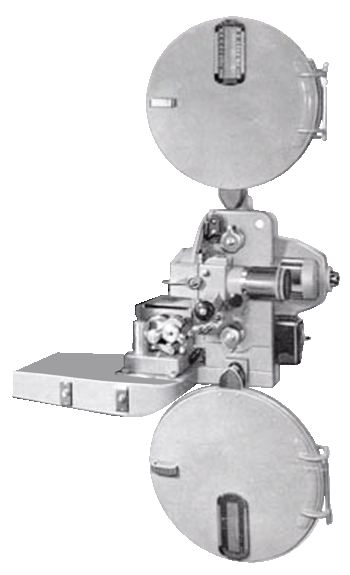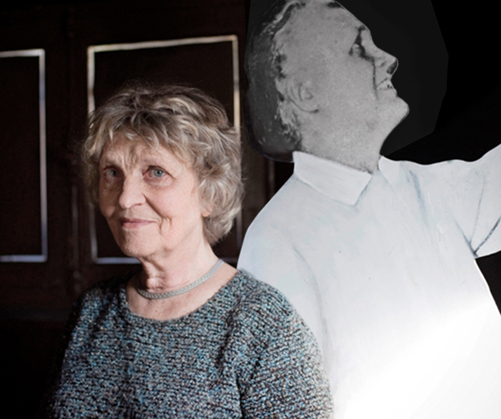ANDRE CHARLIN RECORD UNIVERSE
Black and gold were the colors of the Charlin LP. Unmistakable, these records commanded admiration for their quality and musicality. One could have called them audiophile records... except that the term "audiophile" did not yet exist.
In 1962 André Charlin created his own label under his name:
"After so much time spent recording for others, I could record and release records under my own name."
I first "met" André Charlin by ear in 1966/1967.
A fellow engineering student had a Charlin record player and some Charlin records as well.
At that time, many electrophones were rather mediocre, others were downright bad, but the Charlin device was of great musicality for a simple record player.
It was a pleasure to listen to records on the Charlin record player.
Since that day, I have always been interested in Charlin equipment and recordings. At that time, I was a student at the French film school in the electro sound section.

Without going into the details of André Charlin's biography, which can be viewed on other web sites, here is a brief story of how he came to "make records."
The Cinema Years

From the very beginning, audio and sound reproduction were one of his concerns.
André Charlin was an inventive engineer who filed his first patents for electrodynamic loudspeakers in 1922.
Until 1948, André Charlin worked as a manufacturer and service provider for the cinema industry, more particularly in the field of optical recording, sound truck, film projector, and sound reproduction equipment for cinema theaters.
He was a manufacturer and had designed a reliable and highly efficient 35 mm film projector for theater: the ACTUACOLOR.
By 1948, Charlin equipped a quarter of the movie theaters in France and more than half of the movie theaters in Paris.
In 1948, at the age of 45, after a successful career in the film industry, he decided to give up this activity and devote himself to the emerging hi-fi and recording for the record market.
He transferred his cinematographic activity to PHILIPS, which thus inherits the patent for the curved gate which will later be used on the successful FP 20 film projector.
1949, the year of change!
Charlin abandoned the cinema and devoted himself to sound recording on one hand and design and manufacturing of hi-fi electroacoustic equipment on the other.

This was the year André Charlin founded the Charlin electroacoustic laboratory, and the CECE (Centre d’Enregistrement des Champs Elysées - Recording Center of the Champs Elysées). He settled at 15 Avenue Montaigne, behind the Théâtre des Champs Elysées in Paris (France).

André Charlin's career for record industry thus began in 1949, and due to all the time spent to record for the film industry he used to say:
"I was no longer a complete beginner".
The beginnings of his career in the recording industry coincided with the advent of the microgroove record.
As an inventive engineer, André Charlin would go on to manufacture the first European microgroove record for French label l’OISEAU LYRE.
Louis B. M. Dyer had been in the record industry for over 10 years and was looking for a French service provider who could handle the LP recordings and cutting that had just been released by Columbia.
The collaboration between André Charlin and Louise BM Dyer was beneficial to both companies.
For 4 or 5 years, André Charlin was one of the only people in France to master the entire process, recording, cutting, pressing.
During this period, he worked for lot of record labels such as DUCRETET, ERATO, DISOPHILE, LUMEN, BAM and other's...
André Charlin Records
In 1962, after working extensively for others, he wondered: "Why not make records under my own name?"
After creating his own label in 1962, he was less in demand from his former clients for recording.
In fact, that's not exactly how it happened.
It was because he was less in demand that he created his own label: André Charlin Records.
He took advantage of Ducretet's withdrawal, which sold its record business to Pathe Marconi (EMI), to "recover" some of the iconic or "best recordings" made at the time for Ducretet, which he incorporated into his own catalog under the label SLC.
SLC for Classical Best Selection records.
In a little more than ten years, the French recording industry had changed considerably.
By 1962, he was no longer alone in the market and faced some competition.
The End of André Charlin Records
In 1979, a sordid affair would hasten the end of CECE and LABORATOIRES CHARLIN. André Charlin was an inventor but not a money man; he trusted his staff, and he signed presented document without checking.
This was a sad moment in André Charlin's life. By slipping into a pile of invoices for signature a document transferring his company shares certain executives in his own company attempted to rob him and appropriate his assets.
At a meeting of the Association of Friends of Léonce de St. Martin in 1979, he shared his problems and apologized for not being able to produce the future recording. Trials, courts, André Charlin will finally win his case and be rehabilitated, but the damage was done and this episode will accelerate the end of his companies.
The ALBOHAIR Period
During 1980, and with his wife Madeleine Charlin's blessing, André Charlin transferred his record catalog, his prestigious label, the existing masters, and tapes saved from the disaster to loyal people: Mr. and Mrs. ALBOHAIR, then record dealers in St. Mande.The ALBOHAIRs weren't just record dealers; they were motivated and practiced their trade with passion. Through the company DISCO SHOP, they imported and distributed records, including a number of foreign brands, particularly from the United Kingdom.
From 1980 onwards, it was the ALBOHAIRs who were responsible for the representation and distribution of Charlin records.
In early 1980s they reissued André Charlin records on CD.
According to Arlette ALBOHAIR, André Charlin, who never experienced digital sound, only had the opportunity to listen to the very first results of the CD transfers before passing away in 1983.
Arlette ALBOHAIR confided to me that she listened to the digitization work with extreme vigilance, referring to the vinyl recording, before giving the authorization for CD release.
It is also she who reissued a few LP in 180 g audiophile quality
Arlette ALBOHAIR has always been interested in recorded music, particularly classical music.
Before working as a record dealer in St. Mande, she had the opportunity to work at Barclay, but as she herself says... it wasn't really classical music.
LPs, CDs, digital media... what's the deal in 2018?
Technological progress is one thing, unstoppable, and human behavior is another...
Unfortunately, humanity is by nature fickle and on the lookout for trends... good or bad, for that matter!
The CD dealt a severe blow to vinyl record companies in 1983.
Since 2010, changing consumer habits have dealt a severe blow to CDs and the few record labels that have survived.
Classical music is on the decline, regardless of the medium and codec in the case of digital music.
Since its invention, MP3 has been a format poorly suited to classical music—we knew that from the start!
Subsequently, the widespread adoption of digital formats, on smartphone and other devices regardless of the desired quality, has effectively been a big blow to CD sales.
Arlette ALBOHAIR has been running André Charlin Editions for over 35 years.
CHARLIN Records in 2020
Today, in 2020, the young team that took over "Disques André CHARLIN" has decided to restore "visibility" to these legendary recordings.
This is a good thing, intended to ensure the longevity of CHARLIN recordings and to allow younger people who didn't experience this period to listen to these treasures and realize what we were capable of at that time!
With rare exceptions, CHARLIN recordings are just as good as the most "modern" recordings.
I encourage you to check out CHARLIN Renaissance production CHARLIN Renaissance.
Goodbye Arlette
Sad days for André Charlin Records.
Arlette ALBOHAIR, who presided over the company for over 35 years, passed away on Thursday, April 13th (2023), in her 92nd year.

Our deepest sympathy and condolences to her family.
It is with emotion that I recall my visits to La VARENNE (east suburb of Paris) where she was established.
In 2018, she had already reached a respectable age and could look forward to a trouble-free retirement, she confided in me that it was time for her to retire from the "business".
Her grandson Adrien took over André Charlin Records.
The first time I met Adrien was at a dinner in June 2019 to celebrate Arlette's 88th birthday.
photo Quobuz
Arlette experienced vinyl, CDs, and downloads, and also witnessed both the decline of vinyl and the disenchantment with the CD before seeing vinyl's comeback.
She had more difficulty with the latest technologies, especially dematerialization and files transfer.
Technology is quite often unfair with people having difficulty keeping up.
It seems difficult to consider the smartphone as the holy grail and the solution for the future of the universe.
A phone is used to make calls, a camera to take photos, a computer to "computerize"...
Will having all these devices combined into one single small box bring any benefit to humanity?
Time will tell if all this technological excess is really going in the right direction?
Since 2020, at Adrien's instigation, Disques André Charlin has been undertaking a "Renaissance" program with the aim of preserving these legendary, high-quality recordings.
André Charlin's recordings made in the 1950s and 1960s have retained all their quality and musicality and are truly worth listening to today, in 2023.
This repertoire certainly deserves to be revealed to all those who were not familiar with André Charlin records.
Arlette strongly believed in it ever since she inherited this prestigious collection during André Charlin's lifetime.
Today, to develop the "Renaissance" program, we are using the latest technologies and the best tools available to bring all these recordings back to life.
Younger generations must be able to access this audio heritage, and this is why, far from giving up, André Charlin records are dusting off the somewhat outdated image that some music lovers have of this prestigious collection.
At the time, André Charlin only had analog technology to capture, reproduce, and distribute his musical recordings.
The first wave of digitization of André Charlin recordings, undertaken by Arlette in 1983-85, was both necessary and justified not to miss the CD opportunity.
At this time it was necessary to respond to the CD craze.
Consequently, this digitization work took place at the very beginning of the digital era.
At that time, there were still many unknowns, and digital audio equipment was quite primitive, with rather limited musical performance.
Starting from analog sources, to develop the "Renaissance" program today, we use the latest technologies and the best digital tools, benefiting from 40 years of progress in the digital domain, to revive all these recordings, which have lost none of their interest, quality, or musicality.
The ambition of the "Renaissance" program: to bring André Charlin's sound heritage up to date in the best possible conditions while respecting the original analog material "without additives."
Dear Arlette, thank you once again for everything you have done to preserve André Charlin's recordings, and for all the work you have accomplished.
We will miss you Arlette.



